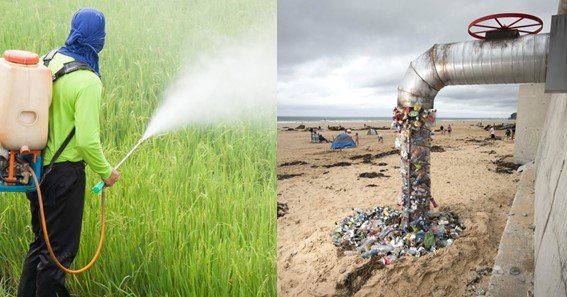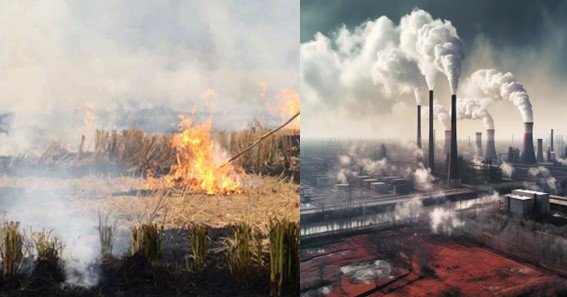Environmental pollution is a pressing issue that affects every corner of our planet. Understanding the causes of environmental pollution is crucial for developing effective strategies to combat it. Pollution arises from a variety of human activities, each contributing to the degradation of air, water, soil, and overall ecosystem health.
Major Causes of Environmental Pollution
- Industrial Activities
- Emission of Pollutants: Industries are one of the leading contributors to environmental pollution. The burning of fossil fuels in factories releases harmful gases like carbon dioxide, sulfur dioxide, and nitrogen oxides into the atmosphere, leading to air pollution and acid rain.
- Chemical Waste Disposal: Factories also discharge toxic chemicals and untreated waste into rivers and oceans, contributing significantly to water pollution.
- Agricultural Practices
- Pesticides and Fertilizers: The excessive use of chemical fertilizers and pesticides in agriculture leads to soil pollution. These chemicals seep into the ground, contaminating water supplies and harming soil health.
- Livestock Farming: Methane emissions from livestock, particularly cattle, are a significant source of greenhouse gases, exacerbating global warming.
- Deforestation
- Loss of Vegetation: Deforestation, driven by the need for agricultural land, timber, and urbanization, leads to a loss of trees that naturally absorb carbon dioxide. This contributes to higher atmospheric CO2 levels, fueling climate change.
- Soil Erosion: The removal of trees destabilizes the soil, leading to increased erosion and sedimentation in rivers, which further pollutes water bodies.
- Urbanization and Transportation
- Vehicle Emissions: The proliferation of vehicles in urban areas emits large quantities of carbon monoxide, hydrocarbons, and other pollutants, contributing to poor air quality and health problems.
- Waste Generation: Urban areas generate enormous amounts of waste, much of which ends up in landfills or is improperly disposed of, leading to land and water pollution.
- Plastic Pollution
- Single-Use Plastics: The widespread use of single-use plastics has led to massive amounts of plastic waste entering our oceans and landfills. Plastics are non-biodegradable and take hundreds of years to decompose, causing long-term pollution.

Conclusion
The causes of environmental pollution are deeply rooted in various human activities. From industrial emissions and agricultural practices to deforestation and urbanization, these activities have significant and often devastating impacts on our environment. Understanding these causes is the first step toward addressing the problem and working towards a cleaner, healthier planet.
FAQ
- What are the primary causes of environmental pollution?
The primary causes include industrial activities, agricultural practices, deforestation, urbanization, and the widespread use of plastics. - How does deforestation contribute to environmental pollution?
Deforestation leads to the loss of trees that absorb carbon dioxide, contributing to higher CO2 levels in the atmosphere, which drives climate change. It also causes soil erosion, further polluting water bodies. - Why is plastic pollution a significant concern?
Plastic pollution is a major concern because plastics are non-biodegradable and can persist in the environment for hundreds of years, harming wildlife and entering the human food chain through microplastics. - How do agricultural practices contribute to pollution?
The use of chemical fertilizers and pesticides in agriculture contaminates soil and water, while livestock farming contributes to greenhouse gas emissions, particularly methane. - What can be done to reduce environmental pollution?
Reducing pollution requires sustainable practices such as reducing industrial emissions, promoting organic farming, protecting forests, encouraging public transportation, and minimizing the use of single-use plastics.










